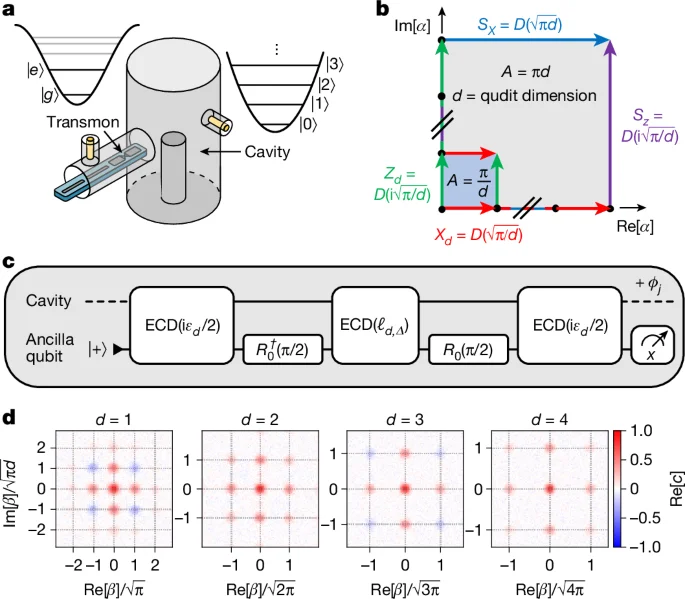
Breakthrough in Quantum Computing: Qudit Error Correction Paves the Way for Scalable Quantum Computers
The race to build truly scalable and reliable quantum computers has taken a giant leap forward. Researchers at Yale University have achieved a groundbreaking milestone: the first successful demonstration of quantum error correction (QEC) on qudits, quantum units that hold information in more than two states. This opens up exciting possibilities for building more powerful and stable quantum systems, potentially revolutionizing fields like cryptography, materials science, and drug discovery.
What are Qudits and Why Are They Important?
Most quantum computers today use qubits, which, like classical bits, exist in two states (0 or 1). However, qubits can also exist in a superposition of both states simultaneously. Qudits, on the other hand, can exist in more than two states, dramatically increasing the Hilbert space – the measure of the number of quantum states a quantum computer can access. As the original study in Nature points out, a larger Hilbert space allows for more complex quantum operations, paving the way for effective quantum error correction.
The Challenge of Quantum Error Correction
Quantum computers are notoriously susceptible to errors. Even tiny interactions with the environment can disrupt delicate quantum states, leading to inaccurate calculations. This is where quantum error correction comes in. QEC is crucial for protecting quantum information from noise and imperfections.
As Live Science points out, without error correction, the error rate in qubits is roughly 1 in 1,000 versus 1 in 1 million million in classical computing bits. To reduce such losses, in their groundbreaking experiment, researchers used a qutrit (3-level quantum system) and a ququart (4-level quantum system) and demonstrated the first-ever experimental quantum error correction for higher-dimensional quantum units using the Gottesman–Kitaev–Preskill (GKP) bosonic code.

Yale's Breakthrough: Correcting Errors in Qudits
The Yale team's study, published in Nature, marked a significant step forward by successfully implementing QEC on qudits. They used a special type of quantum code called the Gottesman-Kitaev-Preskill (GKP) bosonic code to encode quantum information in a more robust way. This approach allowed them to correct errors in both qutrits (three-level quantum systems) and ququarts (four-level quantum systems), pushing past the break-even point for error correction.
According to the study, their optimized GKP qutrit (ququart) lived longer, on average, than the best physical qutrit (ququart) available in the Yale system by a factor of 1.82 ± 0.03 (1.87 ± 0.03), making it one of only a handful of experiments to beat the break-even point of QEC for quantum memories.
Why this Matters for the Future of Quantum Computing
This breakthrough has several important implications:
- Scalability: Correcting errors in qudits brings us closer to building larger, more powerful, and more stable quantum computers.
- Hardware Efficiency: Using qudits can potentially lead to more hardware-efficient architectures for quantum information processing.
- New Possibilities: Qudit-based quantum computers could unlock new algorithms and applications that are not feasible with traditional qubits.
Looking Ahead: The Road to Practical Quantum Computing
While this research is a major step forward, challenges remain. As the Nature study points out, the increased photon loss and dephasing rates of GKP qudit states can lead to a modest reduction in the lifetime of the quantum information encoded in logical qudits. Yet, the researchers note that it provides access to more logical quantum states in a single physical system.
The ultimate goal is to create fault-tolerant quantum computers that can perform complex calculations reliably. This will require further advances in QEC techniques, as well as improvements in the underlying hardware.
Join the Discussion
What are your thoughts on this quantum computing breakthrough? How do you see qudits shaping the future of quantum technology? Share your insights in the comments below!